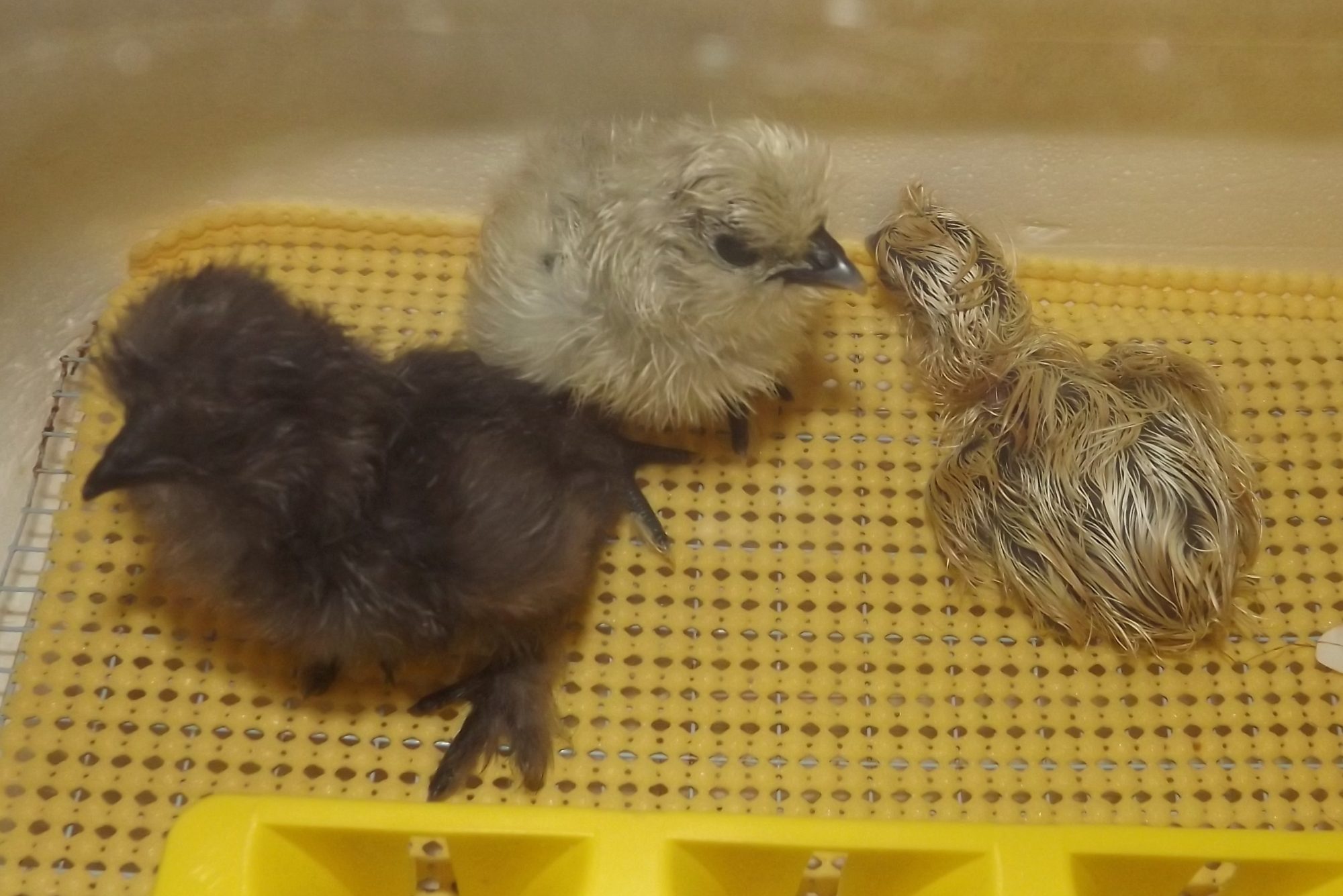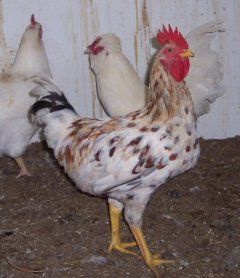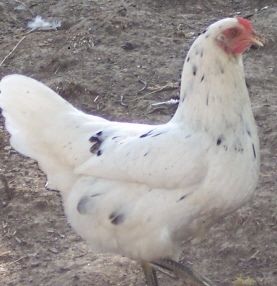So far, weather is good here. I can not believe these guys hatched so early! There are no other pips, besides the 2 paints. I wonder if the others are gonna wait 2 more days, like they are suppose to!
Navigation
Install the app
How to install the app on iOS
Follow along with the video below to see how to install our site as a web app on your home screen.
Note: This feature may not be available in some browsers.
More options
You are using an out of date browser. It may not display this or other websites correctly.
You should upgrade or use an alternative browser.
You should upgrade or use an alternative browser.
Sdwd
- Thread starter Yard full o' rocks
- Start date
No idea. I know the original paint came from having 2 black hens with a white roo over them It requires homogeneous too.
I just put these eggs into lockdown last night, 10PM, exactly 18 days from when I set them. This is just crazy! This is even earlier than my Icelandics hatch! hahaha
I know I will repeat some information in previous posts so bear with me. This is a long thread so it would not hurt repeating the information.
Paints are a heterozygous dominant white or only carry one dominant white gene. Under the white they are most likely extended black at the E locus. Birds can be black and carry another allele at the E locus but from what I can gather from the posts they are extended black.
I have worked with dominant white for years and it is a quirky gene. You are not going to get the same pattern of black markings in each bird because of the nature of the dominant white gene. I have even had heterozygous birds that were a very light gray color over the entire body.
You would only want to breed paint to paint or paint to black. Breeding paints to variates that carry gold would cause problems. The problems would be buff or red and black spots on a white ground color.
Here is an example of a red and black paint. You would get this color pattern if a person were to breed a black tailed red to a paint and then did some additional crossing with the offspring.

Here is an example of a paint.

To produce a paint, the breeder wants a solid black bird under the white- that is why it is best to breed paint to paint or black to paint. If a person were to breed to a partridge this would introduce the gold gene to the offspring. The paints would start to show buff colors on the breast, head and neck in the females and the males would start to look similar to a red pyle.
Any red or red shades ( buff etc. ) would begin to leak through the white. You could get strong spots of red or the red will sometimes appear as smear of red on white( best way I can explain the color).
If a person is dealing with dominant white the following ratios apply to the crossings. To get the ratios you would have to hatch a large number of chicks. I believe some one posted this earlier but I am going to post the information again.
Black X paint = 50% black and 50% paint with a few solid white
paint X paint = 25% white, 25% black and 50% paint You will most likely get a higher percentage of white because some heterozygous dominant white birds can be solid white. This of course would decrease the percentage of paints.
If red begins to show in the paints- back cross the paint to black to eliminate the red in future offspring.
Tim
edited to add..... go see post # 374 in that thread. I think this may be what Sonoran has.... champagne paint. ???
https://www.backyardchickens.com/t/429754/the-american-paint-silkie/360_30
Last edited:
There is alot of information in that thread, for sure! Honestly, these chicks do not look white! Apparently, this is not all that much of a surprise though..... according to what I am reading there. The first chick looks, "champagne!" And the other two light ones look to have some buff coloring on them, or something.




edit.... 6AM..... 2 Porcelain and 1 Buff are pipped.

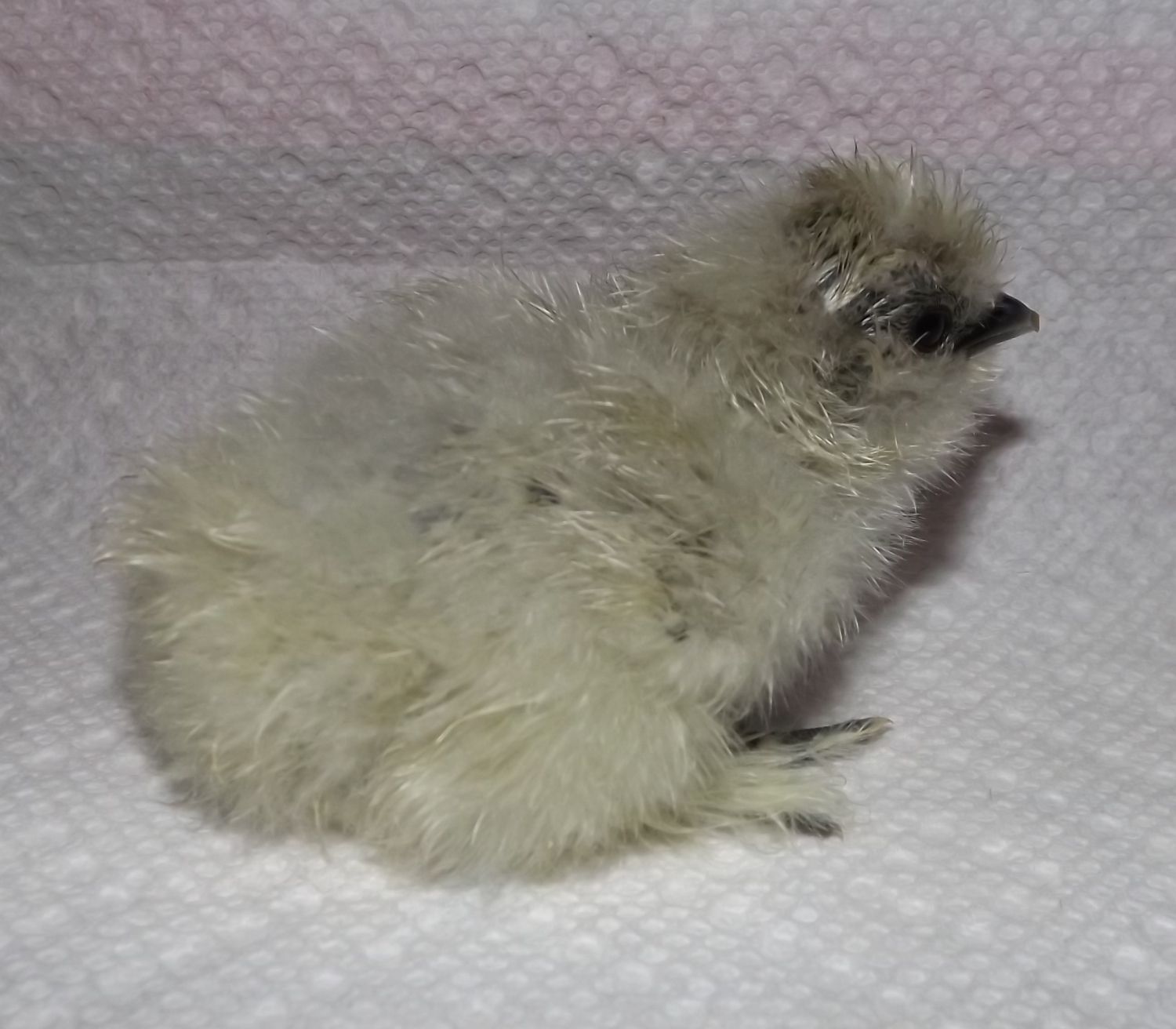
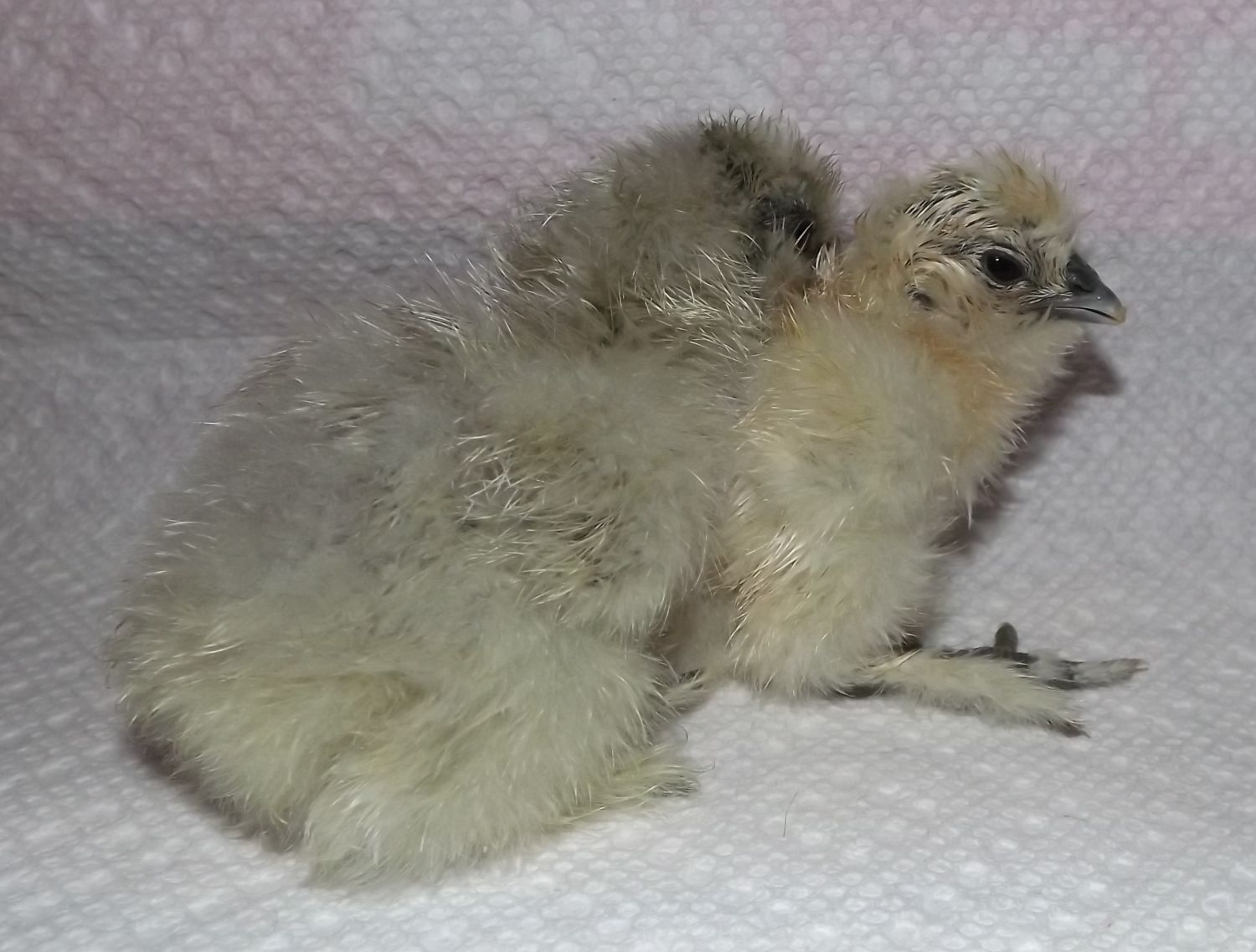
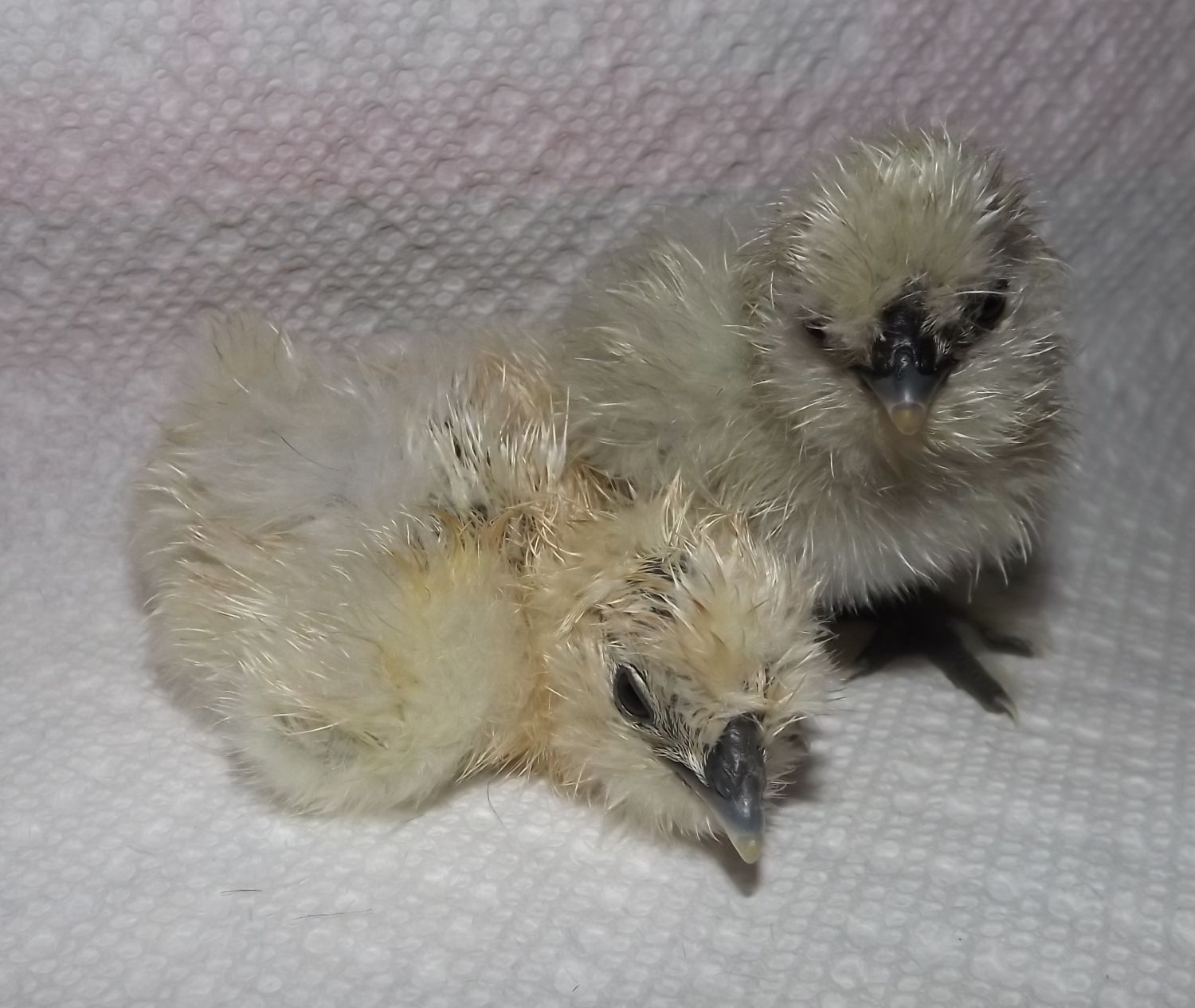
edit.... 6AM..... 2 Porcelain and 1 Buff are pipped.
Last edited:
Woot.... yeah I know that thread makes me dizzy after awhile and it runs together in my brain. See I said homogeneous instead of hetero. I have seen red paints from Europe in pics talk about gorgeous...they have red spots and there is a thread here on blue paints but I have not checked it out yet so do not know what it is all about.
These babies are gorgeous Go porcelains, rock those eggs!
Go porcelains, rock those eggs!
These babies are gorgeous
 Go porcelains, rock those eggs!
Go porcelains, rock those eggs!
Last edited:
Happy that LH is getting the Silkie babies she wanted. Thank you, Kathy!
Kathy, am glad your broody mama is better. Congrats on the early arrivals!
Windy and blowing snow this morning. I think I will have to bring my rubber boots in so they don't fill up with snow.
Windy and blowing snow this morning. I think I will have to bring my rubber boots in so they don't fill up with snow.
Pips now: 2 Lav, 3 Porcelain,
edit... One of the Porcelain has hatched, LadyHawk. Pips continue to increase.
Note to self:
4 Paint chicks ID Blue bands on left leg
1 Porcelain ID Yellow band on left leg
1 Buff ID Red band left leg
1 Lav pen ID Green band left leg
1 Black ID NO band.
Last edited:
New posts New threads Active threads
-
Latest threads
-
-
URGENT Free Rooster to Good Home Walnutport PA
- Started by Taylors1012
- Replies: 0
-
-
Hello from from Oklahoma!
- Started by KayMurhello
- Replies: 1
-
Lice Treatment for Chickens in Canada
- Started by AmeraucanaLover20
- Replies: 4
-
-
Threads with more replies in the last 15 days
-
Introducing TUDYBOOK - The Tudy Coloring Book Generator
- Started by Nifty-Chicken
- Replies: 70
-
Open Contest TudyBook Holiday Dreams, a Text-to-Image Contest
- Started by Debbie292d
- Replies: 46
-
-
Question of the Day - Sunday, December 21st, 2025
- Started by casportpony
- Replies: 44
-
-
×

